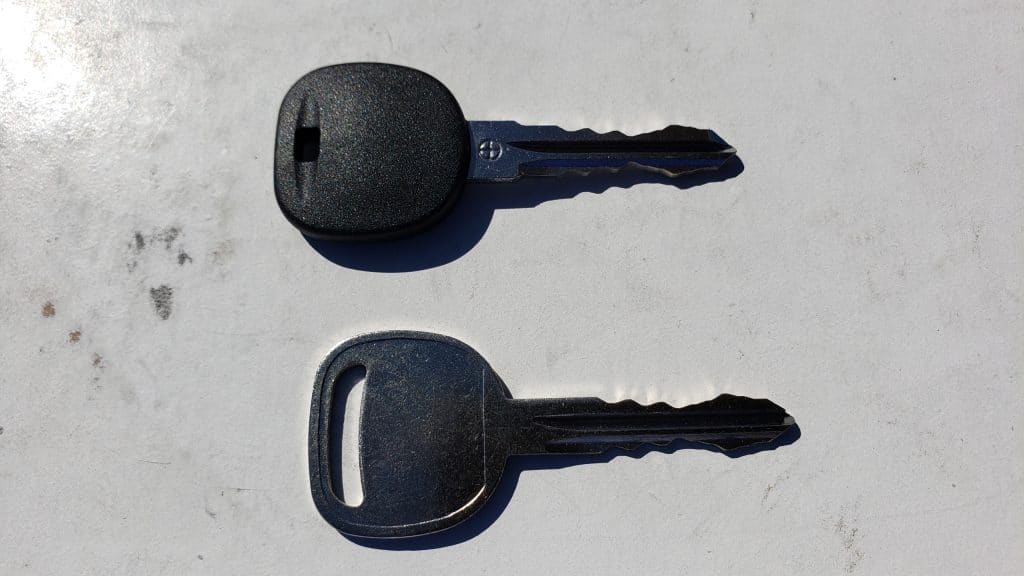How To Get Broken Key Out Of Car Ignition

Okay, petrolheads, let's face it: we've all been there (or know someone who has). You're rushing to that Sunday morning Cars & Coffee, adrenaline pumping, twist the key in the ignition, and *snap*. The dreaded sound. Now you're not firing up that beast, you're staring at a jagged piece of metal lodged firmly in your ignition cylinder. Getting a broken key out is rarely a simple task, but the good news is, it's often manageable without resorting to a costly professional locksmith or dealership visit. This article will arm you with the knowledge you need, highlighting the nuances depending on your ride – from classic carbureted muscle to modern keyless wonders.
The Usual Suspects: Tools of the Trade
Before we dive into the specifics, let's gather our weaponry. The ideal toolkit includes:
- Needle-nose pliers: Preferably with a long, thin nose for precise gripping.
- Key extractor tools: These specialized tools (often available in sets) are designed with hooks or barbs to grip the key remnants.
- Lubricant: WD-40, silicone spray, or even graphite powder can work wonders. Use sparingly! Too much can gunk up the mechanism.
- Small flathead screwdriver: For gently maneuvering or applying leverage.
- Patience: Seriously. Rushing will only make things worse.
The Devil's in the Details: Car-Specific Considerations
The procedure for extracting a broken key can vary drastically based on your car's make, model, and age. Let's break it down:
Classic Cars (Pre-1990s): Simple Mechanics, Simple Solutions?
Ah, the good ol' days. These machines often have simpler ignition cylinders. The key mechanism is typically purely mechanical, meaning no fancy immobilizer chips or complex electronics to worry about. This *can* make extraction easier.
Example: 1967 Ford Mustang Fastback (289 V8)
| Feature | Specification |
|---|---|
| Ignition System | Points-type distributor, mechanical key cylinder |
| Key Type | Simple metal key, no transponder chip |
| Extraction Difficulty | Relatively Low (assuming cylinder isn't seized) |
- Pros: Simple mechanism, less risk of damaging complex electronics.
- Cons: Older cylinders may be worn and more prone to sticking.
Driving Impression: Starting a classic muscle car is visceral. The roar of the engine after a satisfying key turn is pure automotive bliss. Dealing with a broken key? Less blissful, but at least you aren't fighting modern electronics.
Modern Cars (Post-2000s): Immobilizers and Electronic Complexity
Modern cars are a different beast altogether. The ignition system is integrated with the car's computer, often featuring an immobilizer system that prevents starting without the correct key's transponder chip. This adds a layer of complexity, even if the key itself breaks.
Example: 2015 BMW 328i (2.0L Turbo)
| Feature | Specification |
|---|---|
| Ignition System | Electronic key recognition, immobilizer system |
| Key Type | Key fob with transponder chip |
| Extraction Difficulty | Medium to High (potential for immobilizer issues) |
- Pros: Enhanced security features.
- Cons: If the immobilizer is triggered, even a successfully extracted key may not start the car. May require professional reprogramming.
Driving Impression: The 328i's smooth power delivery and precise handling make it a joy to drive. However, the electronic dependence means a broken key can be a real headache, potentially requiring a trip to the dealer.
Keyless Ignition: A False Sense of Security?
Wait, what about keyless ignition systems? Surely, those are immune, right? Wrong. While you won't be breaking a key *in* the ignition, the system can still malfunction. The car may not recognize the key fob, preventing you from starting it. Troubleshooting usually involves replacing the key fob battery or, in more severe cases, reprogramming the fob.
The Extraction Process: A Step-by-Step Guide
- Assess the Situation: How much of the key is protruding? Is the cylinder stuck? Is the car in park?
- Lubricate: Gently apply lubricant to the keyhole. Let it sit for a few minutes.
- Attempt Extraction:
- If enough key is protruding: Use needle-nose pliers to carefully grip and pull the key straight out. Avoid twisting or bending.
- If the key is flush or nearly flush: Use key extractor tools. Insert the tool alongside the key fragment, gently wiggle it until it grips, and then pull straight out.
- If the key is stuck: Use a small flathead screwdriver to gently push and pull on the key fragment while simultaneously trying to extract it with pliers or a key extractor.
- Troubleshooting: If the key won't budge, try a different extraction tool or method. Consider seeking professional help if you're uncomfortable or making no progress.
- Post-Extraction: Once the key is out, test the ignition with a spare key to ensure the cylinder is working properly. If you have a modern car with an immobilizer, ensure the car recognizes the key.
Important Note: If you suspect the ignition cylinder itself is damaged, *do not* force anything. You could cause further damage and necessitate a costly cylinder replacement.
Prevention is Better Than Cure
The best way to avoid this frustrating situation is to take care of your keys. Avoid using excessive force when turning the ignition, and consider replacing worn or damaged keys promptly. A few dollars spent on preventative maintenance can save you a world of hassle later.
So, there you have it. While extracting a broken key from your ignition can be a frustrating experience, with the right tools, knowledge, and a healthy dose of patience, you can often get back on the road without breaking the bank. Now, let's get a debate going: WD-40 or graphite powder for ignition cylinder lubrication? Weigh in below!
